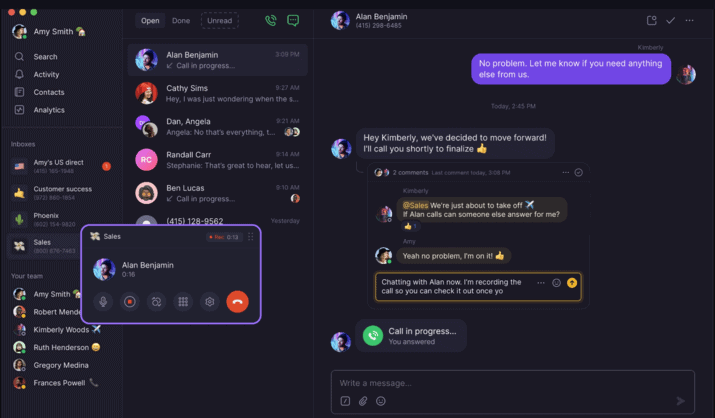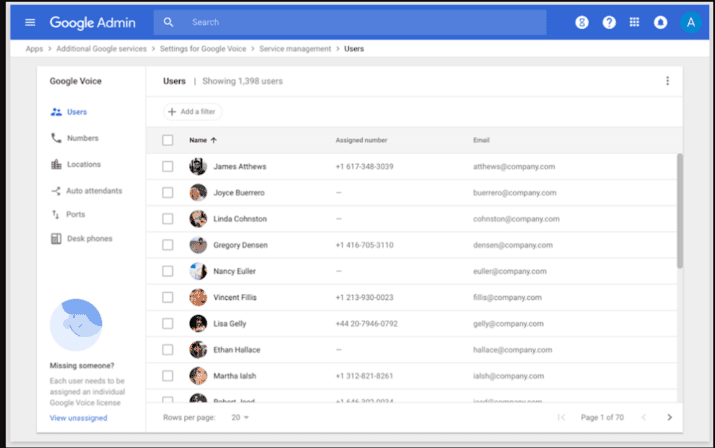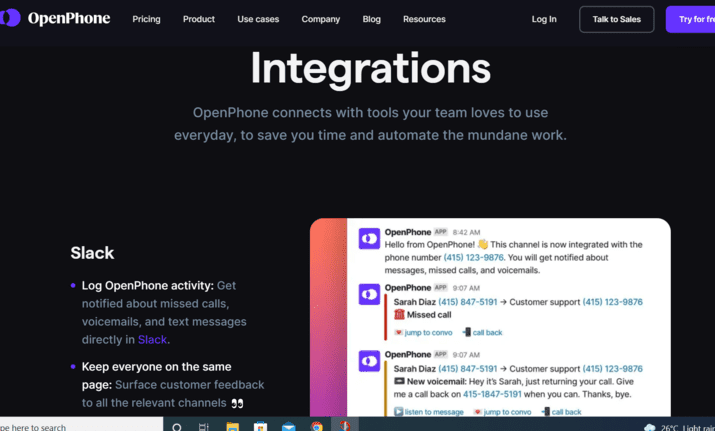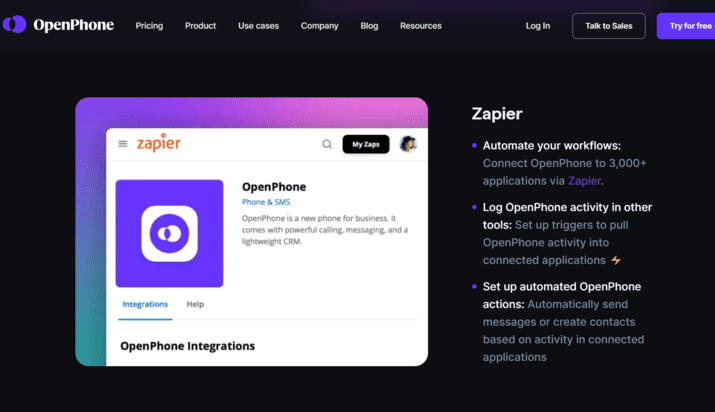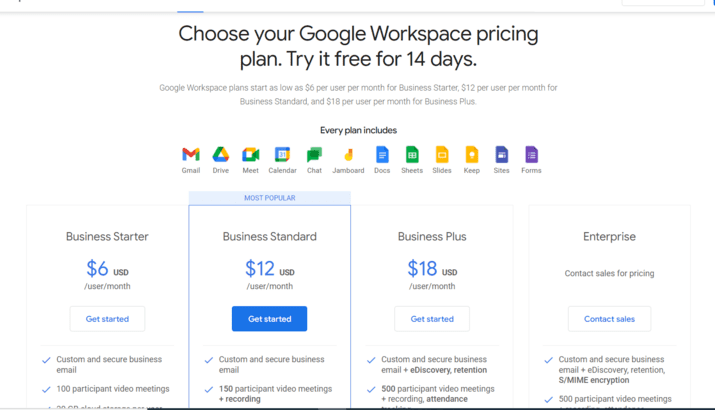Google Voice and Open Phone are two of the most popular VoIP services internationally. Both offer a range of features that can save you money on your phone bill, but which one is better?
Google Voice has been around for a lot longer than Open Phone, dating back to 2005. It was originally GrandCentral, created as a way for people to have one phone number that could ring all of their phones.
Open Phone was launched in 2018 by the team behind Burner, and it takes a similar approach to Google Voice. It’s designed to give you a second phone number that you can use for business or personal calls.
Both Google Voice and Open Phone offer free calls to the United States and Canada. Some key differences could make one better for you than the other.
It helps to understand the differences between Open Voice vs Google Voice to decide which service is right for you.
In this comparison post, we’ll explore:
- What are they, and how do they work?
- Features
- Pricing
- Pros and cons of each
- Similarities and differences
Let’s get started:
Also Read: Best CallRail Alternatives
Open Phone vs Google Voice: What Are They & How They Work?
Open Phone
Freelancers and famous artists dread sharing their personal contact information with everyone with whom they have to interact. It goes for anyone chasing the dollar.
Open Phone is an app that provides a unique phone number for each user, allowing them to keep their personal contact information private.
When someone calls the unique number, it will ring through to the user’s actual phone. The user can then decide whether or not to answer the call. If they choose to answer, they can have a conversation just like they would on any other phone call.
If they choose not to answer, the caller will hear a message saying that the user is unavailable.
The app also allows users to send and receive text messages and multimedia messages. All of these features are available for free. There are neither adverts nor in-app purchases.
Open Phone is available now on the App Store and Google Play. Neat, huh?
Google Voice
Google Voice is a telephone service that provides call forwarding and voicemail services, text messaging, and other features. The web-based application was first launched in March 2009.
Google Voice allows users to consolidate multiple phone numbers into a single number, and receive calls and texts from any device. It also provides call forwarding, voicemail, and call blocking features. Additionally, it offers free calling within the U.S. and low-cost international calling.
Free, worldwide PC-to-PC voice calling is not exactly the scale GrandCentral offered, but it was a start. You can now use Google Voice to make free PC-to-PC calls anywhere globally.
The initial rejection on iPhone platforms prompted Google to develop the Google Voice iPhone web app, an HTML5-based interface that functions on the iPhone much like a normal app.
Inbound call forwarding to any phone was one of the features that made GrandCentral so attractive, and it’s now available in Google Voice. You can have your calls forwarded to any phone you want, including:
- Work phone
- Home phone
- Mobile phone
You can even set up different rules for each number, including silently blocking spam calls.
You can now use Google Voice to send text messages to any phone, as long as the carrier supports it. You’ll save money on SMS fees, and it’s also useful when you need to send a text but don’t have your phone handy.
Not bad for a free SaaS solution. Thanks, Google!
Find out the best alternatives to Google Voice in this post.
Open Phone vs Google Voice: Features
Open Phone
The Dashboard
This app has a user-friendly dashboard that allows you to see all the features at a glance. You can track conversations, schedule calls, add new contacts, and more.
The Inbox
It’s where all your text messages will be stored. You can read them, reply to them, and even start them for later reference. The inbox is organized into different tabs so you can easily find desirable features.
The Call History
It’s where all your past and present call logs are stored. You can use it to check who called whom and when. The call history is also useful for quickly calling back someone who called recently.
The Contacts
Your contacts are stored in this tab. You can add new contacts, edit existing ones, and delete ones you no longer need.
The Settings
The settings tab is where you can customize the app to suit your needs. You can change the theme, language, and more.
The Outbox
It’s the place for all the text messages you’ve sent. You can keep track of who you’ve been messaging and what you’ve said.
The Keypad
The keypad is for making calls. You can also use it to access your voicemail.
Group messaging
This feature allows you to easily message a group of people. Just create a group, add the people you want to message, and start chatting.
Transfer call
You can push a call to another person without disconnecting from the call.
Toll-free local calls
You can make local calls to businesses and people without worrying about long-distance charges.
Multiple numbers
This feature allows you to have unlimited numbers of teams, locations, or people. It’s useful for when you need to have separate lines for work and personal calls.
Multimedia texting
You can send and receive photos, videos, and other media with these features.
Explore: Mumble vs Teamspeak
Google Voice Features
Dashboard
Google Voice has a web-based dashboard that shows all of your messages, calls, and voicemails in one place. You can also use the dashboard to manage your account settings and preferences.
The Inbox is where you’ll find all of your incoming messages, including voicemails and text messages. You can also reply to messages and calls from the inbox folder.
Call forwarding
Call forwarding lets you forward incoming calls to another phone number, like your cell phone. It’s useful if you can’t answer calls on your Google Voice number.
Voicemail
Google Voice has a voicemail feature that allows you to listen to voicemails and even read their transcripts. You can also manage your voicemail settings from the dashboard.
Contact management
This feature allows you to add, edit, and delete contacts from your Google Voice account. You can also create groups of contacts for easy management.
Number porting
Number porting lets you transfer your existing phone number to Google Voice. It can be useful if you’re switching phone numbers when moving to a new location.
Integration with other Google products
Google Voice is integrated with other Google products, like Hangouts and Gmail. It allows you to make and receive calls using your Google Voice number from any of these products.
Explore: Best Teamspeak Alternatives
Usage reporting
Keep track of your Google Voice usage with the usage reporting feature. It allows you to see how many minutes you’ve used, who you’ve called, and what features you’ve used.
Private branch exchange (PBX)
PBX is a private telephone network used by businesses. Google Voice offers a PBX feature that lets you use your Google Voice number as your business’s main phone number. You can add extensions for employees, set up call forwarding, and more.
API
The Google Voice API lets developers build applications that integrate with Google Voice. These applications can place calls, send text messages, and manage voicemails.
Soft Spam Blocks
This feature allows you to block calls and texts from numbers you don’t want to contact you. You can also add numbers to your block list manually or choose to block spam calls automatically.
Also Read: Teamspeak vs Discord
Open Phone vs Google Voice: Integrations
Open Phone Integrations
As your business grows, you’ll want to consider integrating your phone system with other applications. Open Phone allows for team-based enhancements and app connections that make it easy to improve your customer service.
Open Phone integrates with popular applications like Slack, Zapier, and HubSpot to help you streamline your workflows. You can improve your customer service and efficiency by connecting your phone system to these applications.
Slack
Slack and Open Phone work together to give you the best customer service experience. You can have all of your customer interactions in one place by connecting your phone system to Slack.
Zapier
Zapier allows you to connect Open Phone with over 3,000 applications to streamline your workflows. For example, you can automatically add new Open Phone contacts to your CRM.
HubSpot
HubSpot is a CRM that helps you track your customers and sales pipeline. With Open Phone, you can make and receive calls directly in HubSpot. Hence, you never have to leave the application.
Google Voice Integrations
Google Voice integrates with all Google Workspace apps, but it doesn’t integrate with third-party apps like Slack, Zoom, Skype, or WhatsApp.
Google Workspace apps that work with Google Voice include:
- Gmail: You can make and receive calls using Google Voice while you’re signed in to your Gmail account.
- Google Calendar: You can use Google Voice to schedule appointments, conference calls, and reminders.
- Inbox by Gmail: You can use Google Voice to call contacts from your Inbox.
- Google Contacts: You can use Google Voice to call your contacts.
- Hangouts: You can use Google Voice to call your contacts using Hangouts.
- Google Docs: You can use Google Voice to call your contacts using Google Docs.
- Google Sheets: You can use Google Voice to call your contacts using Google Sheets.
- Google Slides: You can use Google Voice to call your contacts using Google Slides.
Connecting with Zapier
You can use Zapier to integrate Google Voice with over 1,000 other apps to automate your workflow. For example, you can use Zapier to connect Google Voice with Slack, Zoom, Skype, or WhatsApp.
Explore: Best Open-source Discord Alternatives
Open Phone vs Google Voice: Pricing
Open Phone Pricing
The pricing is simple and flexible, with no hidden charges. Paying for annual packages is cheaper than monthly payments, so let’s stick to annual billing options. Open Phone offers three subscription models including:
The Standard Pack
This option costs $10 per user/month, billed annually. You get one local, toll-free number, and it has all the essentials to get you going.
Premium
This option is for power users and teams looking for more integrations and collaboration features. It costs $20 per user/month, billed annually. Some perks include group calling, advanced IVR (auto-attendant), analytics and reporting, and HubSpot integration.
Enterprise
This top tier is for organizations with complex requirements. For an undisclosed amount, you’ll get everything on premium plus: custom contract and pricing, dedicated account manager, audit log, and priority support.
Remember, prices are subject to change so you should always refer to respective pricing pages for latest quotes.
Google Voice Pricing
Google Voice offers a 14-day free trial, after which it charges a monthly service fee. Afterward, you’ll have to choose a subscription package. The four options include:
Business Starter
At $6 a month for every user, Business Starter gives you the core features of Google Voice, like:
- Custom business email
- Video meetings capable of supporting 100 participants
- 30GB server storage for every user
- Management controls
- Security controls
- Standard Support
Explore: Twilio vs Plivo
Business Standard
At $12 a month for every user, this subscription offers everything the Business Starter has, with extra features such as:
- Video meetings with recording capable of hosting over 150 participants
- 2TB storage for every user
- The standard support is upgradable to Enhanced Support
Business Plus
At $18 a month per user, this subscription offers:
- Unique secure business email with eDiscovery and retention
- Video meetings with recording, support for attendance tracking, and 500-participants capacity
- 5 TB server storage for every user
- Superior security
- Management controls
- Advanced endpoint management and Vault
- Standard Support upgradable to enhanced
Also Read: Best TextMagic Alternatives
Enterprise
This package is a top-tier subscription, and it has everything that the Business Plus package doesn’t. Such premium features include:
- Ultra security that supports S/MIME encryption
- Live streaming for video meetings with noise cancellation
- Unlimited cloud storage
- DLP and data regions
- Superior enterprise endpoint management
- Enhanced support that’s upgradable to premium support
You’ll need to contact support for a quotation because the Enterprise package is priced according to your business needs. Moreover, prices may vay with time, thus you should aways refer to respective pricing pages for latest quotes.
After you sign up for a paid subscription, you can add users to your account and assign them different roles. The three user types are:
Full Users: These people have full access to all of Google Voice’s features. They can make calls, send texts, and manage settings and voicemails.
Limited Users: These people can make and receive calls, but they can’t send texts or manage settings and voicemails.
Restricted Users: These people can only make outbound calls, and they can’t send texts, manage settings, or access voicemails.
You can also add numbers to your account so that people can call you from their regular phone lines.
Explore: Twilio vs Vonage
Open Phone vs Google Voice: Similarities & Differences
The two platforms have a lot in common, but their unique designs make them suitable for varying scenarios. Which one is best for your needs depends on how you plan to use it.
Let’s explore their similarities and the nuances that set them apart.
Similarities
Open Phone and Google Voice are both VoIP (Voice over Internet Protocol) services. They make calls using an internet connection instead of a cellular or landline network.
You can make unlimited local toll-free calls within the United States and Canada.
Neither service requires you to have a separate phone number. You can use your existing mobile number with Open Phone, and Google Voice lets you choose a new number or port your old number over.
Both services support toll-free MMS (Multimedia Messaging Service) and SMS (Short Message Service). You can send text messages and media files like pictures and videos with either Open Phone or Google Voice.
These two services provide for blocking unwanted callers. You can add numbers to a block list on either Open Phone or Google Voice so that they can never reach you again.
Another similarity is call recording. With either service, you have the option to record incoming and outgoing calls. It’s useful for business purposes or for saving memories of conversations with loved ones.
Differences
Now, let’s explore some of the key differences between Open Phone and Google Voice.
Open Phone is designed with privacy in mind. All calls made through the app are encrypted end-to-end. Not even the Open Phone team can listen in on your conversations.
In contrast, Google Voice is not a private platform. Google has stated they may monitor and record calls made through their service “for quality assurance purposes.”
Open Phone offers a visual voicemail feature that allows you to see a list of your voicemails and play them back without listening to them in real-time. Google Voice also has voicemail, but it works differently.
With Google Voice, you have to call into your voicemail as you would with traditional phone service.
Also Read: Best Twilio Alternatives
Open Phone vs Google Voice: Pros & Cons
Open Phone Pros
- Shared phone numbers
- Supports up to 10 users
- 24/7 support
- Service level agreement
- Usage and activity reporting
- Call forwarding
Open Phone Cons
- No auto-reply support
- No email or Slack integration
Google Voice Pros
- Auto-reply support
- Email and Slack integration
- Group messaging
- Voicemail to text
- Unlimited SMS and MMS
Google Voice Cons
- No shared phone numbers
- No support for up to 10 users
- No 24/7 support
- No service level agreement
- No usage and activity reporting
- No call forwarding
Final Thoughts
Whether you choose Open Phone or Google Voice, you’ll be getting a quality VoIP service. The key is to decide which features are most important to you and your business.
Open Phone is the best choice if privacy is a top concern for you. Its end-to-end encryption ensures that no one, not even the Open Phone team can listen in on your calls.
Google Voice is a better choice if you need more affordable international calls, though the quality of connections could drop mid-calls. Open Phone offers better quality connections, though it’s more expensive than Google Voice.
If you’re unsure which service is right for you, we recommend trying both and seeing which one you prefer. You can always port your number over to the other service if you decide you don’t like it.
Tom loves to write on technology, e-commerce & internet marketing.
Tom has been a full-time internet marketer for two decades now, earning millions of dollars while living life on his own terms. Along the way, he’s also coached thousands of other people to success.


